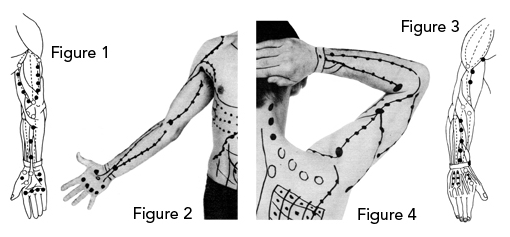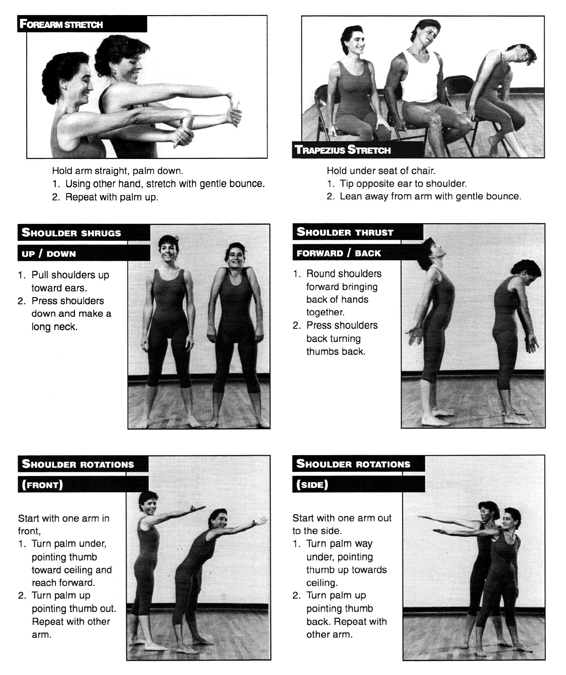EVERY SPORT HAS its overuse injuries, and with tennis it is the shoulder and the elbow – although the wrist and shoulder have a connection also.
As a long time tennis and badminton player, instructor, and coach (I started playing when I was in elementary school), I joyfully overused my right shoulder, arm, and wrist while enjoying many years of teaching and tournament competition with only a few interruptions due to minor (so I thought) injuries.
Until one afternoon…
I arrived at a small beachfront hotel in the Caribbean for what was to be a five week vacation… My deltoid muscle went into extreme spasm. It felt as if someone had taken the muscle under my T-shirt short sleeve and twisted it and kept on twisting. By days end I was in extreme agony. There was NO position that eased that agony and even the slightest movement was excruciating. It felt as if a ton of weight was being suspended from ONE point in the front of my shoulder. The entire upper right quadrant seemed to be involved. My vacation was no vacation (I never once left my hotel room).
It wasn’t until years later that I noticed a bump on my clavicle and realized that the extreme spasm of my deltoid those many years ago had actually broken my clavicle. This was a powerful testament to the power of muscles. The anterior deltoid attaches to the lateral third of the clavicle in front and to the spine of the shoulder blade in the back.
Although most injuries occur on the dominant side, the non-dominant side is not exempt, especially in the case of tennis where an accurate ball toss is imperative. Not too long ago, a tennis pro came to me with neck, shoulder, and arm pain, along with weakness and tingling on his left side. He was unable to use the arm and shoulder to toss the ball for his serve nor could he demonstrate the toss for his students. I followed the treatment plan and exercises outlined below and then asked him to try the action required for a ball toss. He mimicked the action and his eyes followed his hand as in a real ball toss. He did it again and again each toss accompanied by a smile.
Bonnie Prudden Myotherapy® will work if the problem is muscle related. It won’t work if there is pathology: something that requires medical attention.
Test for the Shoulder Wrist Connection
Lie on your back on a hard, flat surface with your arms at your sides, palm down. Your shoulders and arms should lie flat all the way to your fingertips. If the shoulders are lifted even a little bit, have someone press down on the front of your shoulder so that it lies flat on the surface. While your shoulder is being held down, look at your wrist. It will most likely rise appreciably.
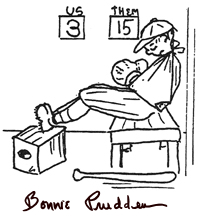 Think Out of the Box
Think Out of the Box
What are your occupations and hobbies?
Do you play a musical instrument? How do they require that you use your wrists, arms and shoulders? Have you had any injuries? Are you under stress? Do you have a tendency toward round shoulders or kyphosis? Are you a dental hygienist, painter, hairdresser, musician, secretary, or farmer? Do you lift extreme weights, crochet, canoe, or play the piano? Your answers will help you figure out why you have the pain.
Take a look at some anatomy diagrams and you will see that many of the muscles in the upper arm and shoulder connect below the elbow in the lower arm. Many of the muscles of the lower arm connect above the elbow in the upper arm. And many muscles of the upper back and chest cross over to the upper arm.
Bonnie Prudden Myotherapy teaches that in order to fix a muscle problem permanently you must treat opposing and adjacent muscle groups.*
*You begin your search for trigger points away from the injured area and work toward it. For instance, if the biceps muscle is the trouble, whether it has just been surgically repaired or suffered a simple strain, ask… “What do I do with my hands and lower arms? What do I do with my upper back and shoulders? What does my occupation or sport require of my hands, wrists, arms and shoulders?”
* Following the treatment of each muscle group, gentle corrective exercise is done in order to teach the muscles new habits.
Ready, Begin.
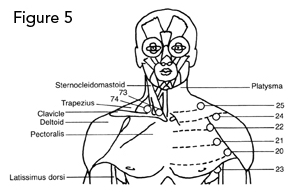 Use Figures 1, 2, 3, 4, 5, 6 as your guide to erase muscle pain and for faster healing to the biceps area.
Use Figures 1, 2, 3, 4, 5, 6 as your guide to erase muscle pain and for faster healing to the biceps area.
-
Begin the search for trigger points in your hand as shown in the figures. When you find a tender place hold steady for 5 to 7 seconds using your knuckle as your tool. You could also use an eraser or even a Sharpie® pen. On a scale of 1 to 10 you should not go any harder than a 5, 6, 7.
-
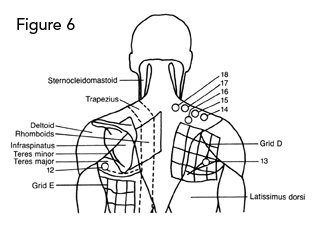 Next, search your forearm (back and front). Follow the line of the muscles using your knuckle, eraser or Sharpie®. There will probably be quite a few really bad ones just below the elbow. BP Myotherapy is very forgiving. The figures here are guides. You may find that the location of your trigger points is slightly different.
Next, search your forearm (back and front). Follow the line of the muscles using your knuckle, eraser or Sharpie®. There will probably be quite a few really bad ones just below the elbow. BP Myotherapy is very forgiving. The figures here are guides. You may find that the location of your trigger points is slightly different. -
Skip to the upper back, top of shoulder and chest and follow figures 5 and 6. For these larger muscle groups in the upper back and top of shoulder you may need to ask the help of a friend since it is not the easiest place to reach. Ask your friend to use his or her elbow. Go in slow and steady. If a friend is not available, do the best you can with your Sharpie® or even a wood spoon. When you treat the chest, it is best to use your thumb. No
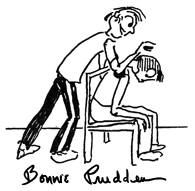 elbows. There are ribs underneath. Initial treatment to the “far away” muscles helps to relax them and takes the pull and pressure off the hurting muscles in the upper arm. Once you have treated the adjacent and opposing muscle groups you will probably notice that the upper arm feels better even though you haven’t touched it. Relaxed muscles promote better circulation and therefore better nutrition to the area needing healing.
elbows. There are ribs underneath. Initial treatment to the “far away” muscles helps to relax them and takes the pull and pressure off the hurting muscles in the upper arm. Once you have treated the adjacent and opposing muscle groups you will probably notice that the upper arm feels better even though you haven’t touched it. Relaxed muscles promote better circulation and therefore better nutrition to the area needing healing. -
Suggestion: If you have a lot of pain, sit next to a table and place a pillow there. Put your arm on top of the pillow. This supports the arm and allows it to rest while you search for trigger points. If you have a lot
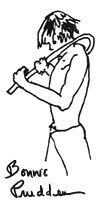 of pain, using fingertips may be enough. Treat the upper arm beginning in the triceps (Figure 1). Use your fingers to search for the trigger points. The weight of the arm will do most of the work for you. Move on to the deltoid (Figure 3). The deltoid attaches in front to the collarbone and in back to the shoulder blade. These points will probably be very tender. Lastly, and gently, use your thumb to treat each side of the biceps (Figure 2) beginning at the elbow and working up. Be gentle.
of pain, using fingertips may be enough. Treat the upper arm beginning in the triceps (Figure 1). Use your fingers to search for the trigger points. The weight of the arm will do most of the work for you. Move on to the deltoid (Figure 3). The deltoid attaches in front to the collarbone and in back to the shoulder blade. These points will probably be very tender. Lastly, and gently, use your thumb to treat each side of the biceps (Figure 2) beginning at the elbow and working up. Be gentle.
Corrective Exercises
The following corrective movements are suggested for each of the muscle groups treated. Use your common sense. If you have only minor muscle pain you will probably not need to adapt the exercises. However, if you have extreme pain, you need to be gentler and perhaps adapt the exercises in order to make it possible for you to keep moving. You may even have to reduce the number of repetitions or put aside an exercise and leave it for another day. DO NOT WORK THROUGH PAIN.
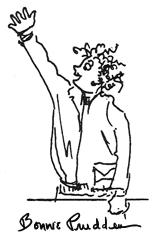 Ordinarily we suggest four repetitions 4 to 6 times a day. Each exercise takes seconds but in order to remind the muscles that they need to learn a new habit (relax, not tighten) you must remind them constantly throughout your day. You know your body better than anyone else. Listen to it. If it tells you “don’t do any more” or “no, don’t do that at all,” listen and obey.
Ordinarily we suggest four repetitions 4 to 6 times a day. Each exercise takes seconds but in order to remind the muscles that they need to learn a new habit (relax, not tighten) you must remind them constantly throughout your day. You know your body better than anyone else. Listen to it. If it tells you “don’t do any more” or “no, don’t do that at all,” listen and obey.
-
Hand and Wrist Forearm Stretch
It is not necessary to hold your arm straight out in front. If you have a lot of pain, rest your arm on your leg or low table but do keep the elbow straight as the muscles run over both the elbow and the wrist. -
Shoulder: Trapezius Stretch and Shoulder Shrugs
These simple exercises, done to a rhythm, help relieve tension and promote healing. Do them often even if you don’t have any pain. You’ll think and feel better and be less tired. -
Upper Back and Chest: Shoulder Thrust, Forward and Back
This gentle movement will stretch the chest, biceps and upper back. Include this exercise even if you don’t have pain as it helps to relieve tension and prevent pain. Combine this exercise with the shoulder shrugs and trapezius stretch and you will have fewer and less intense headaches. -
Upper Back, Deltoid, and Biceps: Shoulder Rotations to the Side and to the Front
If you have a lot of pain these will probably be the most challenging. Adapt by dropping your arm to your side with just slight rotations…or wait until tomorrow. -
Pool
One of the best ways to rehab your muscles is in the pool. Your muscles can relax, movement is easier and healing is faster. REMEMBER: don’t work through pain.
Repeat corrective movements often throughout the day. Adapt the movements by altering the position of your arm and shoulder, or cut back on the number of repetitions. Listen to your body. Your body will do what it can do when it can do it!
——————————————————–
For more information about Bonnie Prudden®, Bonnie Prudden Myotherapy®, workshops, books, self-help tools, DVDs, educational videos, and blogs, visit www.bonnieprudden.com. Or call 520-299-8064 if you have questions or need help. Enid Whittaker, Managing Director, Bonnie Prudden Myotherapy®
Figures are from Myotherapy: Bonnie Prudden’s Complete Guide to Pain-Free Living, by Bonnie Prudden. Drawings are by Bonnie Prudden.
